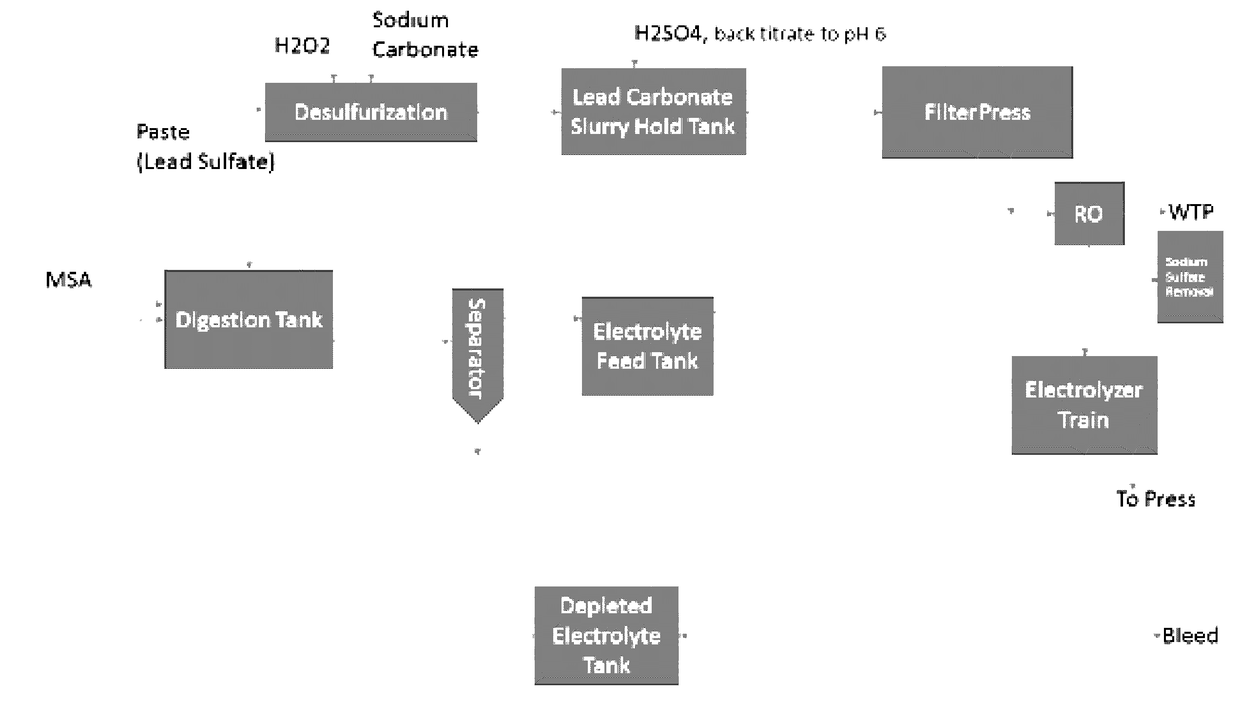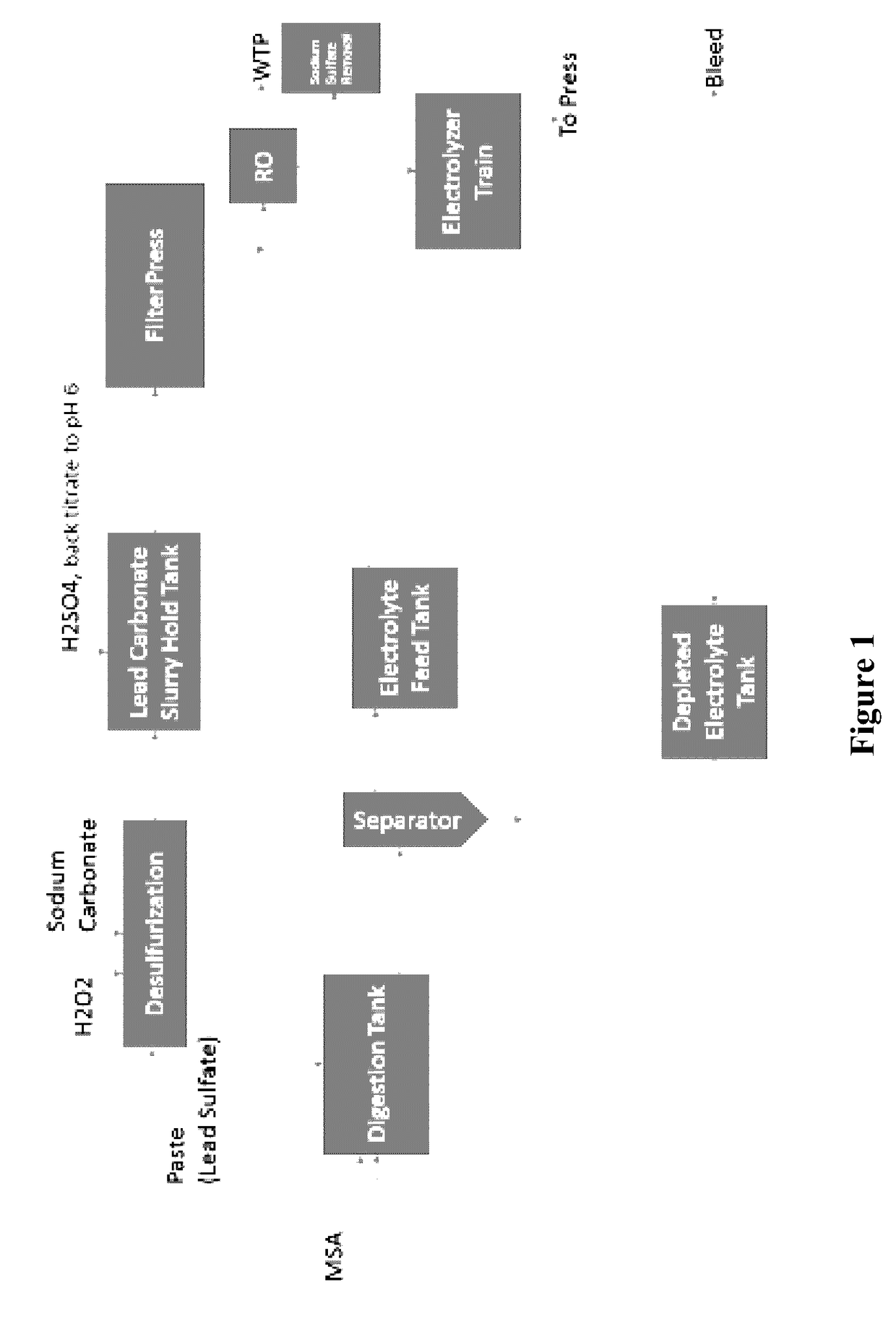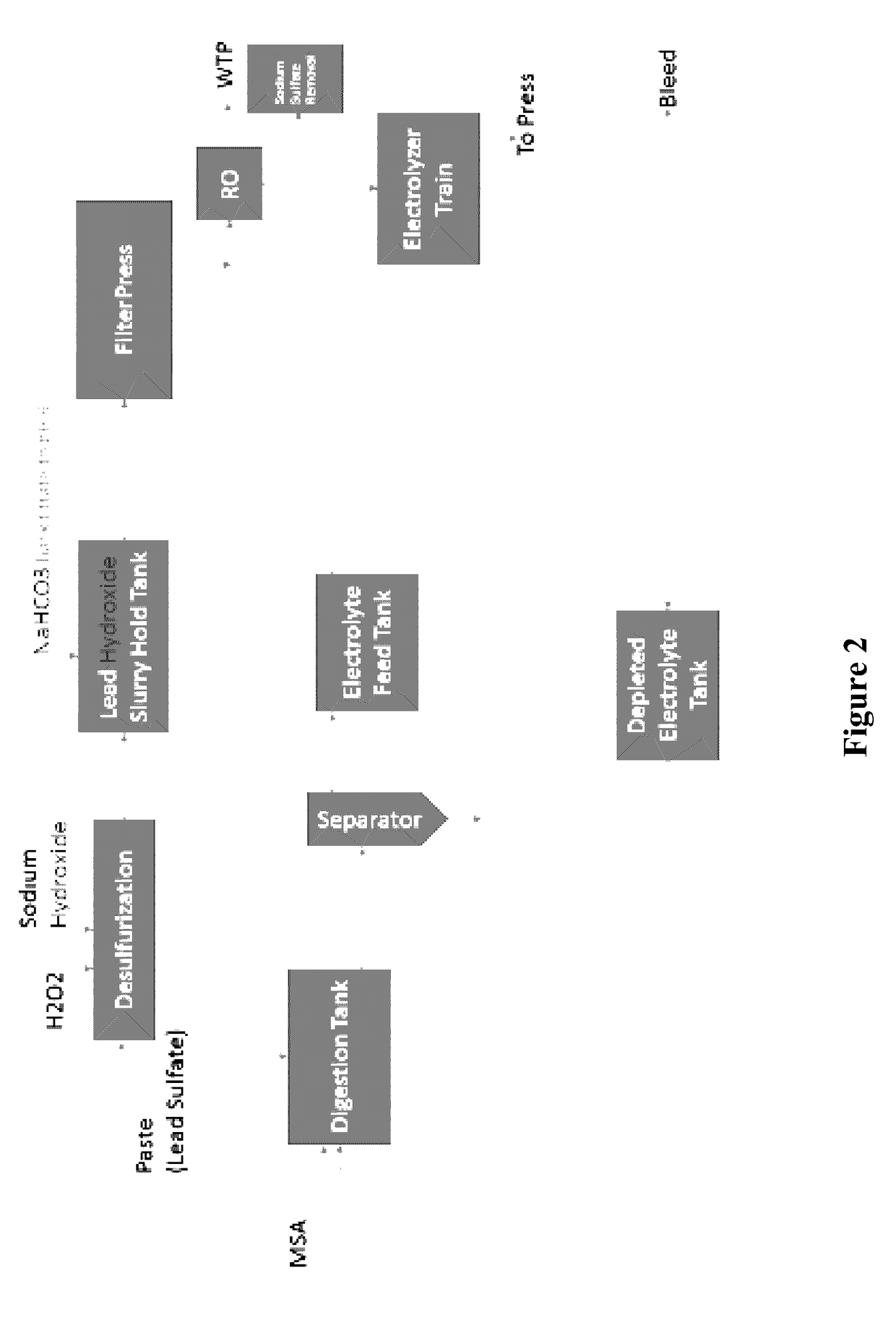Systems And Methods For Continuous Alkaline Lead Acid Battery Recycling
a technology of lead acid battery and system, applied in the field of lead acid battery recycling, can solve the problems of many recycling plants closing, logistical challenges, environmental and economic problems of most known processes,
- Summary
- Abstract
- Description
- Claims
- Application Information
AI Technical Summary
Benefits of technology
Problems solved by technology
Method used
Image
Examples
Embodiment Construction
[0021]The inventors have discovered that lead from lead paste can be electrolytically recovered in a conceptually simple and effective manner using an alkaline desulfurization process in which lead oxide and lead sulfate from the paste are reacted with a base to convert the lead species into the corresponding insoluble lead salts that form a precipitate and to produce a sulfate solution that is then separated from the precipitate. The precipitate (e.g., typically lead hydroxide or lead carbonate) and remaining other insoluble lead oxides (e.g., lead dioxide) is then subjected to a substantially higher pH, yielding soluble plumbite (e.g., Na2PbO2) and undissolved lead dioxide that is removed from the plumbite solution. Undissolved lead dioxide is reduced to lead oxide (e.g., using sodium sulfite or hydrogen peroxide) and recycled for subsequent processing, and pure lead is recovered from the plumbite solution on a moving electrode to produce adherent lead. Alternatively, the precipit...
PUM
| Property | Measurement | Unit |
|---|---|---|
| density | aaaaa | aaaaa |
| temperature | aaaaa | aaaaa |
| temperature | aaaaa | aaaaa |
Abstract
Description
Claims
Application Information
 Login to View More
Login to View More - R&D
- Intellectual Property
- Life Sciences
- Materials
- Tech Scout
- Unparalleled Data Quality
- Higher Quality Content
- 60% Fewer Hallucinations
Browse by: Latest US Patents, China's latest patents, Technical Efficacy Thesaurus, Application Domain, Technology Topic, Popular Technical Reports.
© 2025 PatSnap. All rights reserved.Legal|Privacy policy|Modern Slavery Act Transparency Statement|Sitemap|About US| Contact US: help@patsnap.com



